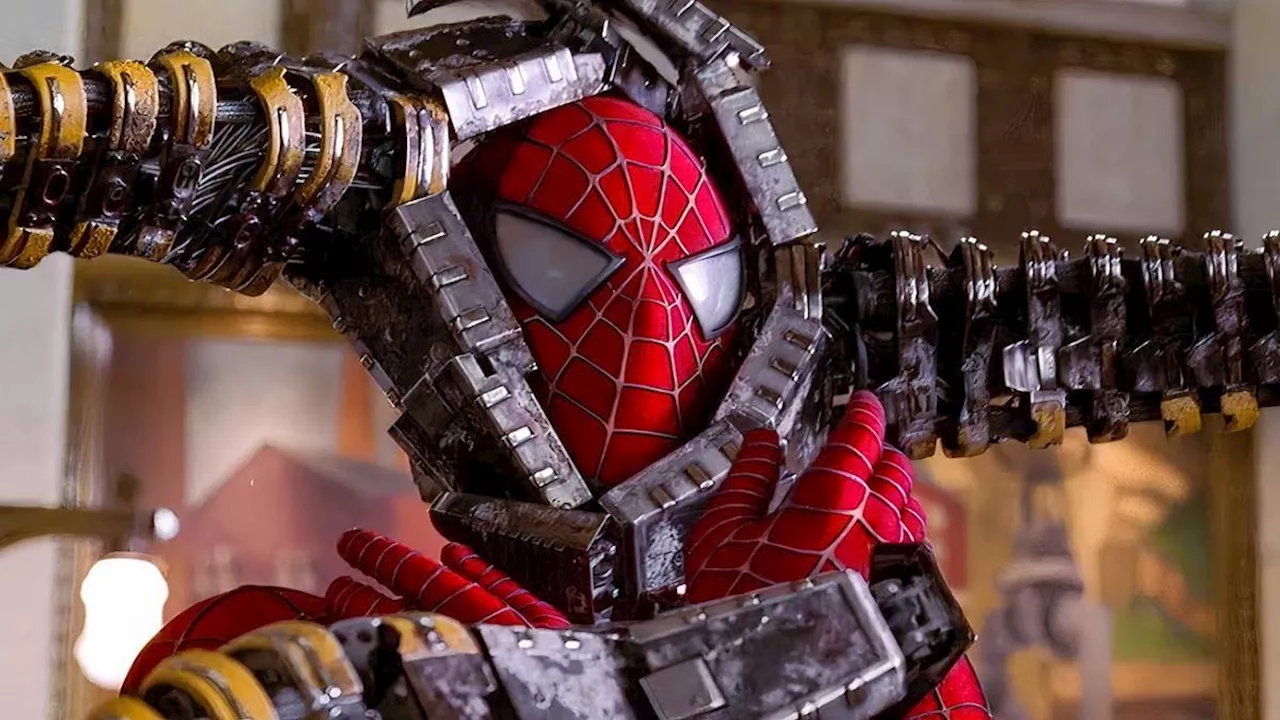Entertainment
Spider-Man’s Greatest Cinematic Foes: A Closer Look at His Rivals

The cinematic world of Spider-Man has introduced audiences to a diverse array of villains, each presenting unique challenges for the iconic hero. This article delves into the most significant foes Spider-Man has faced on the big screen, highlighting their impact on the character and the narrative.
Exploring Spider-Man’s Rogues Gallery
Spider-Man’s rogues gallery is renowned for its complexity, rivaled only by that of Batman. Over the years, cinematic adaptations have brought to life some of the most formidable characters, including the infamous Green Goblin and the cunning Vulture. From the early Sam Raimi trilogy to the recent entries in the Marvel Cinematic Universe, these films have showcased villains who not only challenge Spider-Man physically but also test his resolve and character.
In many of these stories, the structure allows for Spider-Man, portrayed by various actors including Tom Holland and Tobey Maguire, to face setbacks that engage audiences. These defeats, whether they stem from physical confrontations or emotional conflicts, are pivotal in shaping Spider-Man’s journey and his growth as a character.
Noteworthy Villains and Their Impact
The portrayal of villains has varied significantly across different adaptations. For instance, the Rhino, played by Paul GiamattiThe Amazing Spider-Man 2, was anticipated to deliver a thrilling confrontation. However, the film’s execution left much to be desired, with Rhino’s role ultimately limited to a few missile attacks and an unresolved cliffhanger, failing to leave a lasting impression on Spider-Man’s narrative.
Another notable rival is Harry Osborn, who becomes the Green Goblin in Spider-Man 3, portrayed by James Franco. Driven by vengeance over his father’s death, Harry’s conflict with Spider-Man culminates in an action-packed battle. Despite the rapid pace of their confrontation, Harry’s Green Goblin fails to inflict significant damage before being defeated, highlighting the challenges Spider-Man faces in overcoming personal and external adversities.
In the MCU, Shocker, played by Bokeem Woodbine, offers a glimpse into the underestimated nature of some villains. Although not a primary antagonist, Shocker manages to land a powerful punch, sending Spider-Man crashing into a bus. This moment underscores the unpredictability of Spider-Man’s encounters, reminding audiences that even minor villains can deliver significant blows.
The Lizard, portrayed by Rhys Ifans in The Amazing Spider-Man, presents a more physically imposing challenge. While the Lizard’s brutal nature is often emphasized in comic books, the film adaptation tones down this ferocity. The rooftop confrontation concludes when Peter Parker thwarts the Lizard’s plans, showcasing Spider-Man’s resilience.
One of the most strategic threats to Spider-Man is the Vulture, played by Michael Keaton. With the ability to fly, the Vulture introduces a new dynamic to the battles Spider-Man faces. Throughout their encounters, the Vulture proves to be a formidable adversary, defeating Holland’s Spider-Man on multiple occasions, which ultimately builds tension and excitement for the audience.
As Spider-Man continues to evolve in cinematic adaptations, the diverse array of villains he faces remains integral to his story. Each foe not only challenges him physically but also contributes to his character development, reinforcing the notion that even heroes must confront their fears and failures.
In conclusion, Spider-Man’s cinematic journey is marked by a rich tapestry of adversaries. From the powerful Green Goblin to the cunning Vulture, each villain adds depth to the narrative, ensuring that audiences remain engaged in the web-slinger’s ongoing battles.
-

 Science3 weeks ago
Science3 weeks agoInterstellar Object 3I/ATLAS Emits Unique Metal Alloy, Says Scientist
-

 Science3 weeks ago
Science3 weeks agoResearchers Achieve Fastest Genome Sequencing in Under Four Hours
-

 Politics3 weeks ago
Politics3 weeks agoAfghan Refugee Detained by ICE After Asylum Hearing in New York
-

 Business3 weeks ago
Business3 weeks agoIconic Sand Dollar Social Club Listed for $3 Million in Folly Beach
-

 Health4 weeks ago
Health4 weeks agoPeptilogics Secures $78 Million to Combat Prosthetic Joint Infections
-

 Lifestyle3 weeks ago
Lifestyle3 weeks agoJump for Good: San Clemente Pier Fundraiser Allows Legal Leaps
-

 Business3 weeks ago
Business3 weeks agoMcEwen Inc. Secures Tartan Lake Gold Mine Through Acquisition
-

 Science3 weeks ago
Science3 weeks agoMars Observed: Detailed Imaging Reveals Dust Avalanche Dynamics
-

 Health3 weeks ago
Health3 weeks agoResearcher Uncovers Zika Virus Pathway to Placenta Using Nanotubes
-

 World3 weeks ago
World3 weeks agoUS Passport Ranks Drop Out of Top 10 for First Time Ever
-

 Entertainment3 weeks ago
Entertainment3 weeks agoJennifer Lopez Addresses A-Rod Split in Candid Interview
-

 Business3 weeks ago
Business3 weeks agoSan Jose High-Rise Faces Foreclosure Over $182.5 Million Loan








